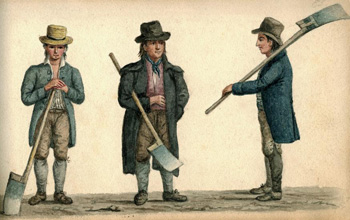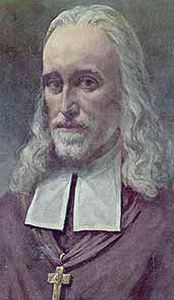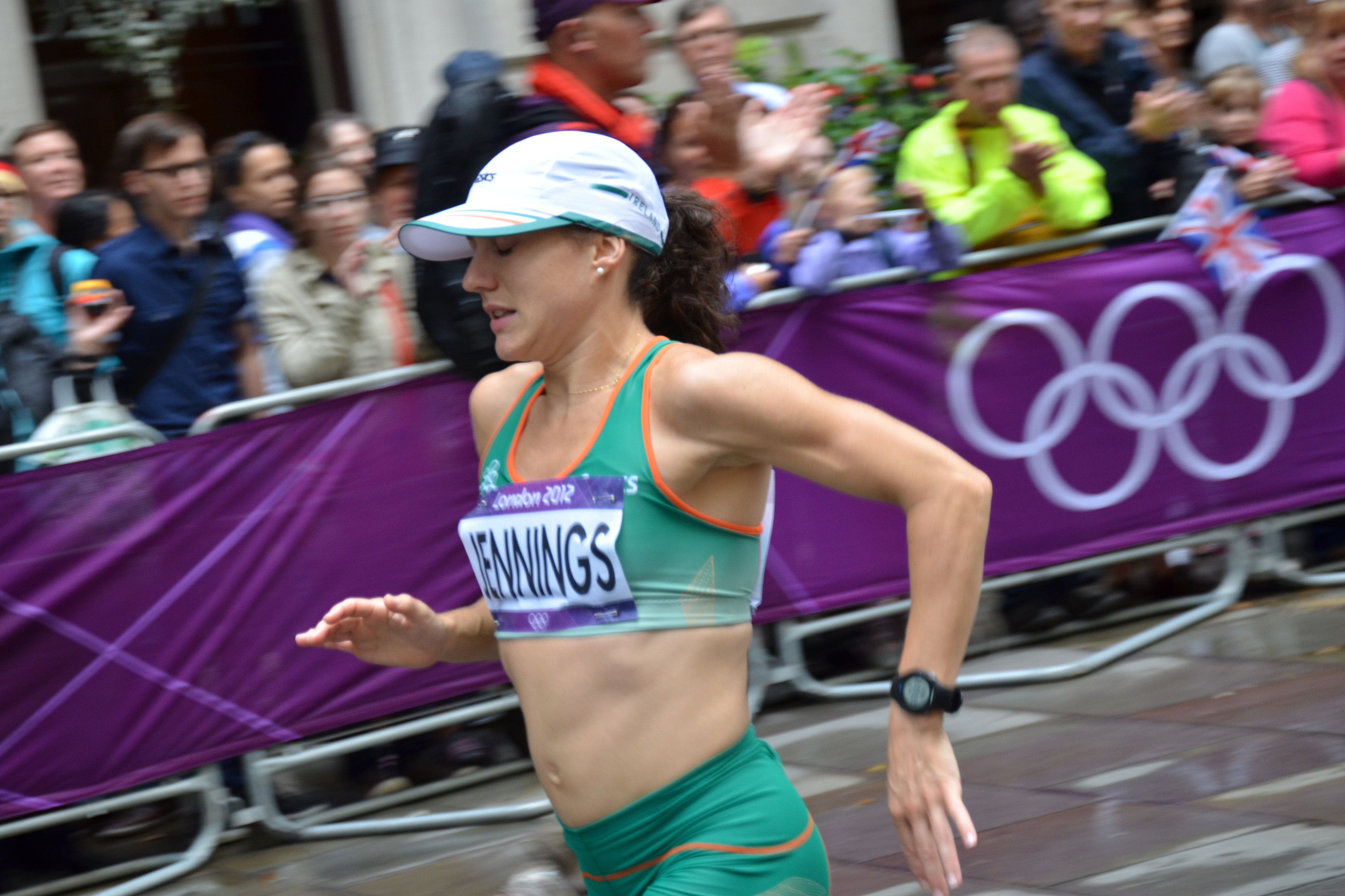|
Main Street, Letterkenny
Main Street ( ga, An Phríomhshráid) is an important thoroughfare in Letterkenny, County Donegal, Ireland. Sometimes claimed to be the longest street in Ireland, it is divided into two sections, with Lower Main Street (the south end) running from the junction at Oldtown Road to the Market Square and Upper Main Street (the north end) running from the Market Square to the junction at Crossview House. Traffic flows in a one-way system from Crossview House southwards. History Theobald Wolfe Tone was captured and held on the street during the Irish Rebellion of 1798. He was held for a short time at Laird's Hotel opposite the Market Square before being transferred to the nearby Derry Gaol. The Wolfe Tone Bar was established in his honour and is located on Lower Main Street on the site of the old Garda barracks. The Barracks building had been there since the 1850s and was an RIC Barracks up to 1922. Hiring fairs (often known as 'the Rabble Day') were held in Letterkenny in years g ... [...More Info...] [...Related Items...] OR: [Wikipedia] [Google] [Baidu] |
Grill Music Venue
The Grill Music Venue, also known as The Grill, formerly The Golden Grill, was a nightclub located in Letterkenny, County Donegal, in Ulster, Ireland. Regarded as the unofficial Fianna Fáil headquarters,"Fianna Fail favourite haunt the Golden Grill 'to reopen'" ''Irish Independent'', 27 September 2008. it has hosted Fianna Fáil party conventions and bingo sessions over the years. The complex housed six bars. DJs and live acts to have performed at the Grill times include , , |
Hiring Fair
Hiring fairs, also called statute or mop fairs, were regular events in pre-modern Great Britain and Ireland where labourers were hired for fixed terms. They date from the time of Edward III, and his attempt to regulate the labour market by the Statute of Labourers in 1351 at a time of a serious national shortage of labour after the Black Death. Subsequent legislation, in particular the Statute of Apprentices of 1563, legislated for a particular day when the high constables of the shire would proclaim the stipulated rates of pay and conditions of employment for the following year. Because so many people gathered at a fair, it quickly turned into the major place for matching workers and employers. Hiring fairs continued well into the 20th century, up to the Second World War in some places but their function as employment exchanges was diminished by the Corn Production Act 1917. This legislation guaranteed minimum prices for wheat and oats, specified a minimum wage for agricultural wo ... [...More Info...] [...Related Items...] OR: [Wikipedia] [Google] [Baidu] |
Oliver Plunkett
Oliver Plunkett (or Oliver Plunket) ( ga, Oilibhéar Pluincéid), (1 November 1625 – 1 July 1681) was the Catholic Archbishop of Armagh and Primate of All Ireland who was the last victim of the Popish Plot. He was beatified in 1920 and canonised in 1975, thus becoming the first new Irish saint in almost seven hundred years. Biography Oliver Plunkett was born on 1 November 1625 (earlier biographers gave his date of birth as 1 November 1629, but 1625 has been the consensus since the 1930s) in Loughcrew, County Meath, Ireland, to well-to-do parents with Hiberno-Norman ancestors. A grandson of James Plunket, 8th Baron Killeen (died 1595), he was related by birth to a number of landed families, such as the recently ennobled Earls of Roscommon, as well as the long-established Earls of Fingall, Lords Louth, and Lords Dunsany. Until his sixteenth year, the boy's education was entrusted to his cousin Patrick Plunkett, Abbot of St Mary's, Dublin and brother of Luke Plunkett, th ... [...More Info...] [...Related Items...] OR: [Wikipedia] [Google] [Baidu] |
Letterkenny Library And Arts Centre
The Letterkenny Library and Arts Centre is located on St. Oliver Plunkett Road in the County Donegal town. It is the central library in the county and is an integral part of Donegal County Council's arts provision. It is the first arts centre operated by a local authority in Ireland. History The Centre opened in 1995 on the site of the demolished Literary Institute. The Literary Institute was built in 1876. It was donated to the town by Doctor Crerand from Illistrin and opened by the Lord Chancellor of Ireland, Lord O'Hagan. It was once a seminary used to train priests before St Eunan's College was built. It was also a school and a social club. It lay derelict for a number of years before demolition to make way for the new library. Facilities Following renovations in May 1999, the premises in the Central Library building became a dedicated exhibition space, with occasional live performances. The Centre specialises broadly in visual arts, community arts, music, literature and fi ... [...More Info...] [...Related Items...] OR: [Wikipedia] [Google] [Baidu] |
Donegal News
The ''Donegal News'' (also known as ''Derry People/Donegal News'' and formerly ''Derry People'') is a twice-weekly local newspaper in the northwest of the island of Ireland, first published in 1902. Originally covering Derry, Northern Ireland, it moved across the border to Letterkenny, County Donegal, at the beginning of the Second World War and took on more of a Donegal focus. It is owned by the North West of Ireland Printing and Publishing Company, which was established in 1901 by the Lynch family, who also own several other papers in the region including the '' Ulster Herald'', ''Fermanagh Herald'', '' Strabane Chronicle'', '' Tyrone Herald'', and ''Gaelic Life''. Its main competitors are the '' Donegal Democrat'' and ''Derry Journal''. The paper, despite a "rebranding" several years ago, continues to be known, for short, locally across the northern half of County Donegal as the ''Derry People''. Its two editions had a circulation of 15,467 for the first half of 2010, with the ... [...More Info...] [...Related Items...] OR: [Wikipedia] [Google] [Baidu] |
Cathedral Of St Eunan And St Columba
St Eunan's Cathedral ( ), or the Cathedral of St Eunan and St Columba as it is also known, is a cathedral in the parish of Conwal and Leck, part of the Diocese of Raphoe. Built between the years of 1890 and 1900, the cathedral is found in Letterkenny, County Donegal in Ireland. There are two cathedrals in the county; an older cathedral of the same name is found in the town of Raphoe, and since the Reformation, has been used by the Church of Ireland. The cathedral was commissioned by Cardinal O'Donnell - then Bishop of Raphoe - and who, in 1888 aged 32, became the youngest bishop in the world at that time. The cathedral, located on Castle Street opposite Conwal Parish Church in the town, celebrated its centenary in 2001. Description The cathedral is named for the Saints Adamnán and Columba; it opened on 16 June 1901 and is built in Victorian neo-Gothic style on a site overlooking the town. It was designed by William Hague, the well known Dublin architect and protégé of ... [...More Info...] [...Related Items...] OR: [Wikipedia] [Google] [Baidu] |
Paul Kehoe
Paul Kehoe (born 11 January 1973) is an Irish Fine Gael politician who has been a Teachta Dála (TD) for the Wexford constituency since 2002. He was appointed Chair of the Committee on Education, Further and Higher Education, Research, Innovation and Science in September 2020. He served as Minister of State at the Department of Defence from 2011 to 2020 and Government Chief Whip from 2011 to 2016. Early and private life Kehoe was born in Bree, County Wexford, in 1973. The son of Myles and Bernadette Kehoe, his father was a farmer and political activist. He was educated at St. Mary's CBS, Enniscorthy, and Kildalton Agricultural College, County Kilkenny. Kehoe is also a farmer. He is married to Brigid O'Connor, of Taghmon, and the couple have three children. Political career Kehoe was first elected to Dáil Éireann as a Fine Gael TD for the Wexford constituency at the 2002 general election. In June 2002, Enda Kenny became Leader of Fine Gael and Kehoe was appointed Fine Ga ... [...More Info...] [...Related Items...] OR: [Wikipedia] [Google] [Baidu] |
St Eunan's College
St Eunan's College ( ; ga, Coláiste Adhamhnáin), known locally as The College to distinguish it from the cathedral and GAA club, is a voluntary Roman Catholic all-male secondary day school (and former boarding school) in County Donegal, Ireland. It is located upon Sentry Hill in Letterkenny. Named after Adomnán or Eunan (the Abbot of Iona who was native to Tír Chonaill, mainly modern County Donegal, and is patron saint of the Roman Catholic Diocese of Raphoe), the school's foundation stone was laid on the patron saint's feast day of 23 September. Its buildings and grounds include the College Chapel, a medial courtyard and playing fields. Architectural features include four turreted round towers and flying buttresses which are modelled on the nearby Cathedral. Sporadic extensions have occurred, including during the early 1930s and the late 1970s – science laboratories and a demonstration room were added in between these two periods of major building work. A monkey puzzle ... [...More Info...] [...Related Items...] OR: [Wikipedia] [Google] [Baidu] |
Leinster
Leinster ( ; ga, Laighin or ) is one of the provinces of Ireland, situated in the southeast and east of Ireland. The province comprises the ancient Kingdoms of Meath, Leinster and Osraige. Following the 12th-century Norman invasion of Ireland The Anglo-Norman invasion of Ireland took place during the late 12th century, when Anglo-Normans gradually conquered and acquired large swathes of land from the Irish, over which the kings of England then claimed sovereignty, all allegedly sanc ..., the historic provinces of Ireland, "fifths" of Leinster and Meath gradually merged, mainly due to the impact of the Pale, which straddled both, thereby forming the present-day province of Leinster. The ancient kingdoms were shired into a number of counties of Ireland#2.1 Pre-Norman sub-divisions, counties for administrative and judicial purposes. In later centuries, local government legislation has prompted further sub-division of the historic counties. Leinster has no official funct ... [...More Info...] [...Related Items...] OR: [Wikipedia] [Google] [Baidu] |
Dublin
Dublin (; , or ) is the capital and largest city of Republic of Ireland, Ireland. On a bay at the mouth of the River Liffey, it is in the Provinces of Ireland, province of Leinster, bordered on the south by the Dublin Mountains, a part of the Wicklow Mountains range. At the 2016 census of Ireland, 2016 census it had a population of 1,173,179, while the preliminary results of the 2022 census of Ireland, 2022 census recorded that County Dublin as a whole had a population of 1,450,701, and that the population of the Greater Dublin Area was over 2 million, or roughly 40% of the Republic of Ireland's total population. A settlement was established in the area by the Gaels during or before the 7th century, followed by the Vikings. As the Kings of Dublin, Kingdom of Dublin grew, it became Ireland's principal settlement by the 12th century Anglo-Norman invasion of Ireland. The city expanded rapidly from the 17th century and was briefly the second largest in the British Empire and sixt ... [...More Info...] [...Related Items...] OR: [Wikipedia] [Google] [Baidu] |
Southern Lebanon
Southern Lebanon () is the area of Lebanon comprising the South Governorate and the Nabatiye Governorate. The two entities were divided from the same province in the early 1990s. The Rashaya and Western Beqaa Districts, the southernmost districts of the Beqaa Governorate, in Southern Lebanon are sometimes included. The main cities of the region are Sidon, Tyre, Jezzine and Nabatiyeh. The cazas of Bint Jbeil, Tyre, and Nabatieh in Southern Lebanon are known for their large Shi'a Muslim population with a minority of Christians. Sidon is predominantly Sunni, with the rest of the caza of Sidon having a Shi'a Muslim majority, with a considerable Christian minority, mainly Melkite Greek Catholics. The cazas of Jezzine and Marjeyoun have a Christian majority and also Shia Muslims. The villages of Ain Ebel, Debel, Qaouzah, and Rmaich are entirely Christian Maronite. The caza of Hasbaya has a Druze majority. History Free Lebanon State and South Lebanon security belt Southern Leba ... [...More Info...] [...Related Items...] OR: [Wikipedia] [Google] [Baidu] |
United Nations Interim Force In Lebanon
The United Nations Interim Force in Lebanon ( ar, قوة الأمم المتحدة المؤقتة في لبنان, he, כוח האו"ם הזמני בלבנון), or UNIFIL ( ar, يونيفيل, he, יוניפי״ל), is a UN peacekeeping mission established on 19 March 1978 by United Nations Security Council Resolutions 425 and 426, to confirm Israeli withdrawal from Lebanon which Israel had invaded five days prior, in order to ensure that the government of Lebanon would restore its effective authority in the area. The 1978 South Lebanon conflict came in the context of Palestinian insurgency in South Lebanon and the Lebanese Civil War. The mandate had to be adjusted twice, due to the Israeli invasion of Lebanon in 1982 and after the Israeli withdrawal from Lebanon in 2000. Following the 2006 Lebanon War, the United Nations Security Council enhanced UNIFIL and decided that in addition to the original mandate, it would, among other things, monitor the cessation of hosti ... [...More Info...] [...Related Items...] OR: [Wikipedia] [Google] [Baidu] |








.jpg)